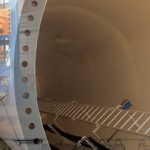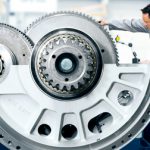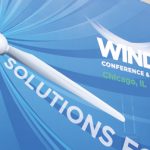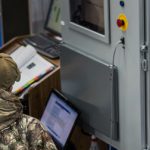As onshore wind power expands, suitable sites will become scarcer in the long term. By identifying further suitable sites in forested regions, decision-makers plan to increase the number of potential sites. However, forested sites demand a differentiated approach to address the complex topography, turbulence caused by wind flow, national regulations and stakeholders’ sometimes extremely diverse interests. Under what conditions are forest wind farms feasible and profitable?
The land area in Germany that is fully suitable for harnessing the power of wind amounts to around 8 percent. This percentage rises by 4.5 percent if suitable forested sites are included and by a further 10 percent if nature conservation areas are added. These are the conclusions of the “Potenzial der Windenergienutzung an Land” (Potential of onshore wind power) study, which the German Wind Energy Association (BWE) reissued in March of this year. On the other hand, 78 percent of Germany’s land area is unsuitable for producing energy from wind, as these areas are too close to infrastructure or residential zones or inappropriate from the perspective of nature conservation.
Given this, space on farmland, fields and meadows may soon be at a premium because the percentage of suitable land area identified by the BWE does not actually take into account wind conditions, ownership conditions and geographical features. When all these aspects are taken into consideration, the locations that are actually suitable for wind farm realization and profitable operation amount only to a few percentage points of Germany’s land area.
Paradigm Shift: Forests No Longer ‘No-Go Areas’
In light of the above, sites located in various types of forests are increasingly moving into the focus of local councils, owners/operators and investors. At some locations, high energy yield is promised by the wind conditions high above the tree tops. The decision makers in the German state governments have also become aware of this fact. They are now increasingly differentiating between biotopes and economically used forests, which enables them to identify locations that offer ideal wind farm conditions in intensively cultivated commercial forests. After North-Rhine Westphalia published its new wind power decree last summer and now also permits forested wind sites, Baden-Wuerttemberg also passed new regulations in late May which govern the harnessing of wind power in forest areas. The paradigm shift is evident: public bodies no longer categorically exclude forested sites. Instead, after impartial analyses and assessment of wind conditions and profitability and after weighing the individual interests of all parties, suitable forest locations can now be identified and developed.
However, up to a height of around 90 meters (i.e. around three times the height of the trees themselves), the trees increase turbulence to critical levels. This in turn causes vibrations of the rotor blades, exposing them to significant stresses and adversely affecting the stability and service life of the turbines and their components. In view of this, forested sites require hub heights of at least 120 meters to avoid rotor blades operating in the layer of increased turbulence above the tree crowns. Mature technology does exist and suitable wind turbines have been available on the market for some years. Yet forest locations must offer higher profitability than wind sites situated on open land, as yield — which depends largely on the rotor diameter — can only be increased by using larger rotors, which in turn require higher hub heights to avoid the zone of increased turbulence. In view of these greater heights, this involves increased purchase, design and construction costs and therefore requires a differentiated profitability analysis.
Higher Wind Turbines, Higher Investment Costs
In this situation, the upstream procedures for wind resource analysis are all the more important. After all, on-site wind measurement, which supplies fundamental data for site-related wind resource assessment and profitability analysis, is one of the basic requirements for the licensing and approval procedure, and therefore must realistically map the wind profile up to hub height. The German Federation of Wind Power and Other Renewable Energies (Fördergesellschaft Windenergie und andere Erneuerbare Energien, FGW) require long-term measurements carried out with a cup anemometer on a measurement mast. However at heights of over 100 meters, the design and construction of such a measurement mast is relatively expensive.
Instead of a wind measurement mast that reaches up to hub height, a smaller measurement mast can be used and the data measured by this mast complemented with additional measurements carried out by other systems. The FGW standard, for example, recommends a measurement mast that extends to at least two-thirds of the hub height. In this case, a LIDAR (light detection and ranging) system can be used to measure and complement the missing wind data from higher atmospheric layers. A LIDAR system installed at ground level enables wind velocities and directions to be measured at heights of between 40 and 250 meters. Measurement points in a vertical direction can be defined at a resolution of approximately 20 meters.
LIDAR Systems Suitable for Complementary Measurement
The equipment sends vertical, ultra-short laser pulses into the atmosphere. The photons emitted by the system are scattered by aerosols and dust particles in the air flow. The backscattered photons are collected on the LIDAR telescope and registered by a highly sensitive detector. The LIDAR system uses the received light signals to make high-precision calculations of wind direction and velocity based on changes in frequency and signal runtime (Doppler effect). In combination with the simultaneously determined exact reference data of anemometer measurements, the wind profile can be extrapolated up to the heights of the upper tip of the rotor blade. The data thus offer a reliable basis for subsequent wind-resource assessments and profitability analyses, enabling the possible energy yield to be forecasted and quantified with maximum accuracy.
Another challenge faced in the assessment of potential wind sites concerns the often complex topography. Most of the high-wind areas that offer high yields are not located in lowland forests, but on minor mountain ranges. However, unlike lowlands, hills, valleys, open strips and other geographical obstacles have a significant and widespread influence on wind conditions at a site. Depending on the direction of the wind, these influences can vary massively, causing “jet effects” or interactions among wind turbines (wakes).
The Simulation Model — Critical for Yield Prediction
In view of the above, the framework conditions require careful selection of a suitable simulation model for the calculation and prediction of potential and yield based on wind measurements. While two-dimensional simulations, such as the “Wind Atlas Analysis and Application Program” (WAsP) of the Technical University of Denmark in Risø, is sufficient for lowland areas, they produce excessive errors and standard deviations when applied to complex and hilly terrain. As a result, yield predictions and profitability analyses can no longer be used as reliable and bankable reports but are reduced to mere forecasts that involve a high level of uncertainty.
By contrast, 3-D simulation tools such as WindSim enable the inclusion of complex topographic data from GIS systems, ensuring that wind conditions are described with a sufficient level of accuracy. This ensures an improved data set used as basis for potential analysis and yield prediction. TÜV SÜD’s experts review whether complex calculations using more elaborate 3-D simulations make sense for a potential wind site, also considering economic perspectives. The experts must answer the following question: Is 2-D simulation sufficient or is the terrain so complex that a 3-D simulation is required?
Given this, in the run-up to modelling TÜV SÜD’s wind power experts use RIX analysis to describe and assess the terrain over an area of 20 x 20 kilometers. The experts also carry out detailed calculation and examination of gradients in a radius of 3,500 meters around the wind turbine. The result, known as the ‘ruggedness index’ (RIX), is rated on a 15-point scale which indicates the percentage of the surroundings of the wind turbine that exceed a defined gradient. For values from 0 to 5, 2-D simulations are fully suitable. For values between 6 and 10, correction factors and adjustment parameters must be taken into account when 2-D simulation is used. 3-D simulations therefore already offer advantages at these values. For calculations in forested regions, for example, the hub height can be reduced by virtual methods. However, if the RIX value exceeds 11, application of a 3-D simulation is recommended.
Conclusion
On principle, wind turbines of the 2nd generation with hub heights of around 140 meters and rotor diameters of over 100 meters are suitable for harnessing the power of the wind even at greater heights. However, compared to sites located in lowland areas the necessary assessments involve more work and are more complex and cost-intensive. TÜV SÜD’s wind experts apply state-of-the-art methods to measure, check and assess the profitability and wind conditions of potential wind farm locations. In these activities, they profit from their long-standing experience with project-related wind reports and own studies, such as the modelling and calculations carried out for the wind atlases on behalf of the German states of Baden-Wuerttemberg and Hesse.
Spain has been a worldwide pioneer in wind regulation. Since the first regulation was implemented in 1998 to provide financial support to wind and other renewable technologies, approximately 35,000MW (21,000MW of wind) have been installed, representing 35 percent of Spain’s overall installed capacity. As of December 2010, wind power facilities supplied almost 20 percent of the Spanish electricity demand. Spanish companies are among the worldwide leaders in wind energy and Spanish banks were among the first financial institutions to implement specific financing schemes for wind projects. Accordingly, we view the Spanish wind sector as a success story. Of course, a driving factor of the Spanish wind sector’s success has been the generous feed-in tariff to the promoters (approximately 8.5 percent of internal rate of return) financed through the electricity tariff paid by consumers. Now that Spain is suffering from the financial crisis, this system has proved to be inefficient and the government has decided to freeze the feed-in tariffs for new projects. However, there is room for growth, as we explain below.
Existing regulation: pros and cons. Renewable energy facilities of less than 50MW of installed capacity fall within the so-called “special regime” which, according to the 1997 Spanish Electricity Act, entitle the promoters to obtain an additional remuneration to that of the price obtained on the market, the so-called pool price. This additional remuneration has to be calculated considering, among other factors, the incurred investment costs and ensuring a reasonable rate of return compared to the monetary cost in the capital markets. To encourage the implementation of renewable energies in Spain, the government implemented a feed-in tariff in 1998. At that time, the installed capacity of renewable energies was less than 5,000MW, most of it corresponding to cogeneration and hydro, and Spain aimed to satisfy 12 percent of its energy demand with renewable sources by 2010. The feed-in tariff implemented in 1998 (and subsequently renewed with minor changes in 2004 and 2007) granted the right to feed all the produced energy into the grid and to receive a remuneration based on either a fixed tariff (“tariff option”) or a pool price plus a premium (“pool option”) for 20 years for wind. The remuneration is not paid by the government through the state budget, but rather by the electricity consumers. This system has proven to be a success in terms of promoting wind installations: 14 years later Spain is close to 35,000MW of renewable energy production of which approximately 21,000MW correspond to wind.
However, the feed-in tariff as originally envisaged by the regulator has proven inefficient, particularly in difficult financial times. Both the tariff and the pool options are based on (a) the pool price (in the tariff option the promoter receives the difference between the price paid by the pool and the fixed tariff) and (b) a frozen demand (a drop in demand of 2.1 percent in 2012 compared to 2011) has dramatically reduced the pool price (by about 40 percent since December 2008). As a result, the part of the remuneration that is not covered by the pool has increased and the government, for political reasons, has decided not to pass this cost through to consumers in one shot. This strategy is estimated to cause a tariff deficit of approximately € 7 billion for 2012. Not having envisaged a market-oriented remuneration that could take into account these circumstances, and there being little room for the government to modify the remuneration of the commissioned installations (aside from hours limitation and temporary cuts in the tariff), the government has decided to respect the remuneration of the wind projects (at least for the moment), but has implemented a moratorium for new projects of both wind and other renewable technologies. By adopting these measures, the government is aiming to avoid potential litigation from the promoters of commissioned projects for passing retroactive measures.
And the future? According to the Spanish energy watchdog, approximately 11,200MW of green energy will need to be installed to meet the 20 percent EU target by 2020. In addition, the 1997 Spanish Electricity Act recognizes the right to promote renewable projects and to receive a remuneration considering, among others, the incurred investment costs and a reasonable rate of return compared to the monetary cost in the capital markets. Therefore, apart from the proposed new tax of approximately 6 percent to the sales of electricity imposed on the generator, we expect the government to enact regulations applicable to new projects in the near future. The decrease in cost of wind technology coupled with increased technical efficiency will lower the internal rates of return for sponsors below the previous levels. Perhaps an auction system, such as the one already implemented for solar photovoltaic plants in which the remuneration is offered by promoters, could be a possible solution for wind. However, according to certain sources, wind projects can be profitable even without feed-in tariffs in windy areas of Spain (e.g., in Galicia). Therefore, it seems that Spain’s wind power development is more likely in a time-out — not in a game-over mode.
Luis Muñoz is a Partner, and Raimundo Ortega Bueno is Of Counsel, at Jones Day in Madrid. They focus their practice on law involving renewable energy technology in both the regulatory and financing areas. They can be reached at lmunoz@jonesday.com, rortega@jonesday.com, +34.91.520.3947, or visit www.jonesday.com.
The views expressed in this column are the personal views of the authors, and do not reflect those of Jones Day or its clients.








































